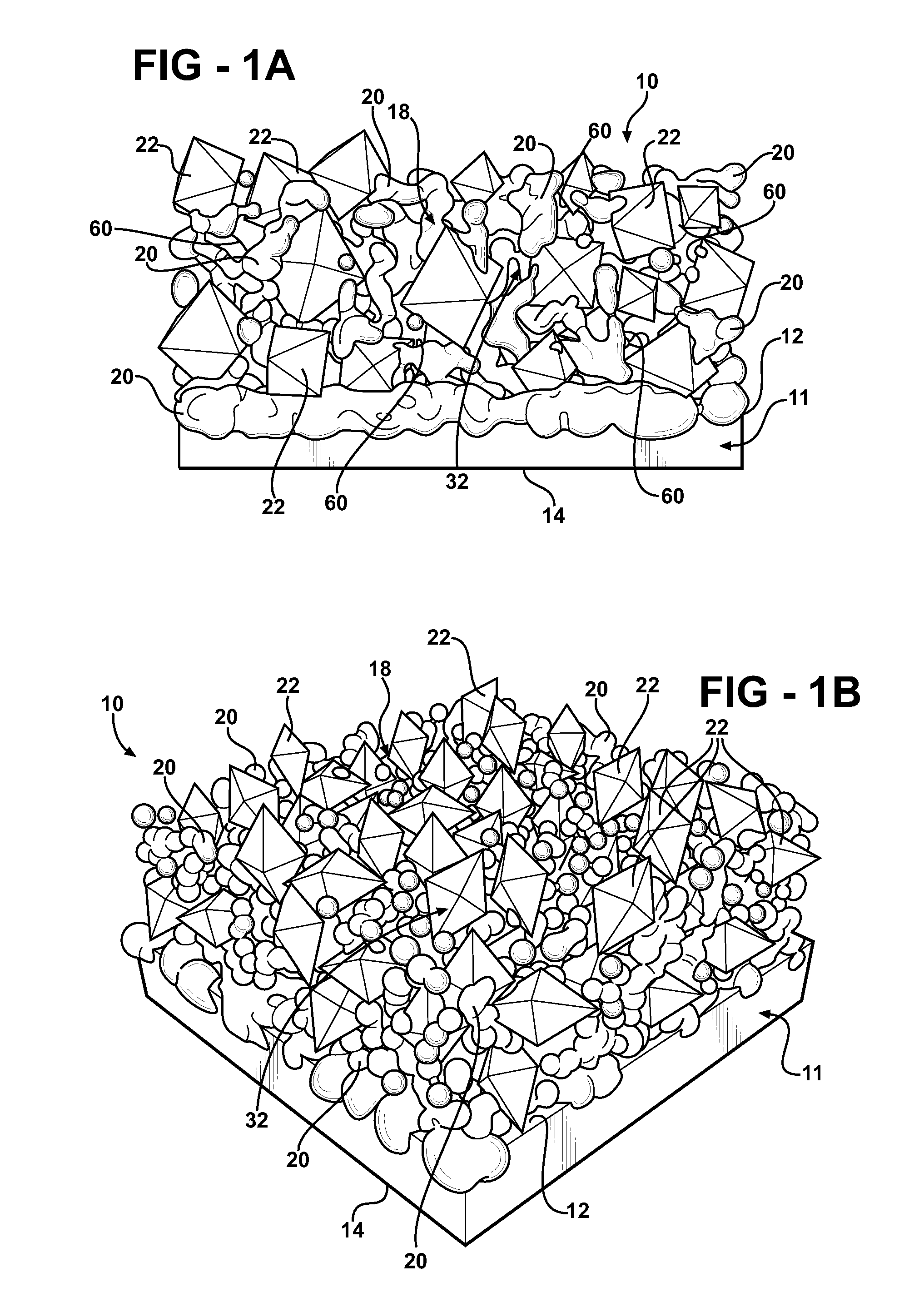Electrode for energy storage device and method of forming the same
a technology of energy storage device and electrode, which is applied in the direction of liquid/solution decomposition chemical coating, primary cells, pressure inorganic powder coating, etc., can solve the problems of non-time effective deposition rate as relates to coating thickness of the substrate per unit, non-time effective deposition of coating onto the substrate, and laser evaporation. , to achieve the effect of improving nano-structure, low cost and outstanding adhesion properties
- Summary
- Abstract
- Description
- Claims
- Application Information
AI Technical Summary
Benefits of technology
Problems solved by technology
Method used
Image
Examples
Embodiment Construction
[0065] Referring to the Figures, wherein like numerals indicate like or corresponding parts, an electrode of the present invention is generally shown at 10. The electrode 10 of the present invention is formed from a metal tape, i.e. foil, generally indicated at 11 and shown fragmentally in FIGS. 1A to 1B, 3A through 3F, and 6A to 6B, is used to form a first electrode such as an anode and a second electrode such as cathode (both not shown), spaced by a separator and combined into a cell (not shown) for producing electric power without limiting the scope of the present invention. The metal current collector 11 of the first electrode and the second electrode has opposed sides 12 and 14, as best illustrated in a cross sectional view shown in FIG. 1A. The electrodes are combined into at least one cell used for a battery 15 for an automotive vehicle 17. The present inventive concept has various other applications including and not limited to high efficiency thin-film photovoltaic solar ce...
PUM
| Property | Measurement | Unit |
|---|---|---|
| size | aaaaa | aaaaa |
| size | aaaaa | aaaaa |
| thickness | aaaaa | aaaaa |
Abstract
Description
Claims
Application Information
 Login to View More
Login to View More - R&D
- Intellectual Property
- Life Sciences
- Materials
- Tech Scout
- Unparalleled Data Quality
- Higher Quality Content
- 60% Fewer Hallucinations
Browse by: Latest US Patents, China's latest patents, Technical Efficacy Thesaurus, Application Domain, Technology Topic, Popular Technical Reports.
© 2025 PatSnap. All rights reserved.Legal|Privacy policy|Modern Slavery Act Transparency Statement|Sitemap|About US| Contact US: help@patsnap.com



